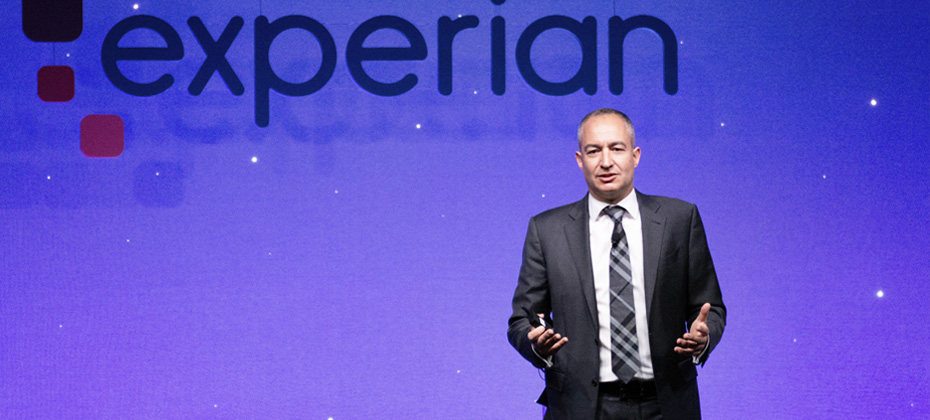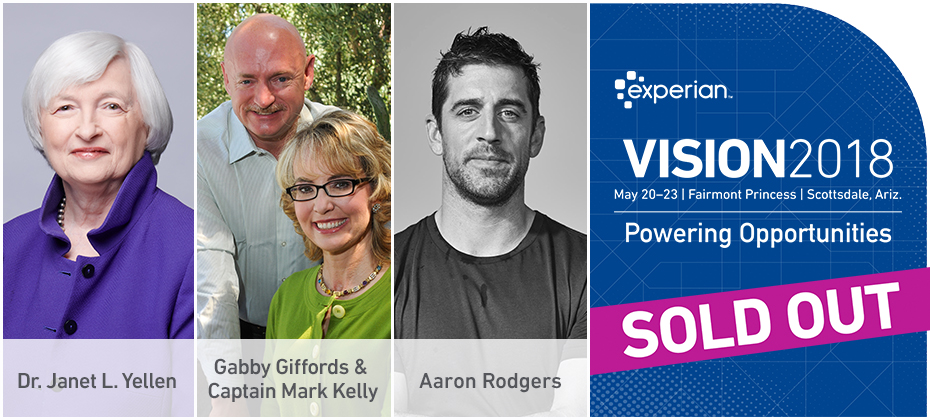Financial Services

Federal legislation makes verifying an individual’s identity by scanning identity documents during onboarding legal in all 50 states Originally posted on Mitek blog The Making Online Banking Initiation Legal and Easy (MOBILE) Act officially became law on May 24, 2018, authorizing a national standard for banks to scan and retain information from driver’s licenses and identity cards as part of a customer online onboarding process, via smartphone or website. This bill, which was proposed in 2017 with bipartisan support, allows financial institutions to fully deploy mobile technology that can make digital account openings across all states seamless and cost efficient. The MOBILE Act also stipulates that the digital image would be destroyed after account opening to further ensure customer data security. As an additional security measure, section 213 of the act mandates an update to the system to confirm matches of names to social security numbers. “The additional security this process could add for online account origination was a key selling point with the Equifax data breach fresh on everyone’s minds,” Scott Sargent, of counsel in the law firm Baker Donelson’s financial service practice, recently commented on AmericanBanker.com. Read the full article here. Though digital banking and an online onboarding process has already been a best practice for financial institutions in recent years, the MOBILE Act officially overrules any potential state legislation that, up to this point, has not recognized digital images of identity documents as valid. The MOBILE Act states: “This bill authorizes a financial institution to record personal information from a scan, copy, or image of an individual’s driver’s license or personal identification card and store the information electronically when an individual initiates an online request to open an account or obtain a financial product. The financial institution may use the information for the purpose of verifying the authenticity of the driver’s license or identification card, verifying the identity of the individual, or complying with legal requirements.” Why adopt online banking? The recently passed MOBILE Act is a boon for both financial institutions and end users. The legislation: Enables and encourages financial institutions to meet their digital transformation goals Makes the process safe with digital ID verification capabilities and other security measures Reduces time, manual Know Your Customer (KYC) duties and costs to financial institutions for onboarding new customers Provides the convenient, on-demand experience that customers want and expect The facts: 61% of people use their mobile phone to carry out banking activity.1 77% of Americans have smartphones.2 50 million consumers who are unbanked or underbanked use smartphones.3 The MOBILE Act doesn’t require any regulatory implementation. Banks can access this real-time electronic process directly or through vendors. Read all you need to know about the MOBILE Act here. Find out more about a better way to manage fraud and identity services. References 1Mobile Ecosystem Forum, MEF Mobile Money Report (https://mobileecosystemforum.com/mobile-money-report/), Feb. 5, 2018. 2Pew Research Center, Mobile Fact Sheet (http://www.pewinternet.org/fact-sheet/mobile/), Jan. 30, 2017. 3The Federal Reserve System, Consumers and Mobile Financial Services 2015 (https://www.federalreserve.gov/econresdata/consumers-and-mobile-financial-services-report-201503.pdf), March 2015.

Millennials have been accused of “killing” a lot of things. From napkins and fabric softener to cable and golf, the generation which makes up the largest population of the United States (aka Gen Y) is cutting a lot of cords. Despite homeowning being listed as one of the notorious generational group’s casualties, it’s one area that millennials want to keep alive, according to recent statistics. In fact, a new Experian study revealed 86% of millennials believe that buying a house is a good financial investment. However, only 15% have a mortgage today. One explanation for this gap may be that they appear too risky. Younger millennials (age 22-28) have an average near prime score of 652 and older millennials (age 29-35) have a prime score of 665. Both subsets fall below the average VantageScore® credit score* of U.S. consumers – 677. Yes, with the majority of millennials having near prime or worse credit scores, we can agree that they will need need to improve their financial hygiene to improve their overall credit rankings. But their dreams of homeownership have not yet been dashed. Seemingly high aspirations (of homeownership), disrupted by a reality of limited assets, low scores, and thin credit files, create a disconnect that suggests a lack of resources to get into their first homes – rather than a lack of interest. Or, maybe not. Maybe, after surviving a few first-time credit benders that followed soon after opening the floodgates to credit, millennials feel like the combination of low scores and the inability to get any credit is only salt in their wounds from their lending growing pains. Or maybe it’s all the student loans. Or maybe it’s the fact that so many of them are underemployed. But maybe there’s still more to the story. This emerging generation is known for having high expectations for change and better frictionless experiences in all areas of their life. It turns out, their borrowing behavior is no different. Recent research by Experian reveals consumers who use alternative financial services (AFS) are 11 years younger on average than those that do not. What’s the attraction? Financial technology companies have contributed to the explosive growth of AFS lenders and millennials are attracted to those online interactions. The problem is many of these trades are alternative finance products and are not reported to traditional credit bureaus. This means they do nothing to build credit experience in the eyes of traditional lenders and millennials with good credit history find it difficult to get access to credit well into their 20s. Alternative credit data provides a deeper dive into consumers, revealing their transactions and ability to pay as evidenced by alternative finance data, rental, utility and telecom payments. Alt data may make some millennials more favorable to lenders by revealing that their three-digit credit score (or lack there of) may not be indicative of their financial stability. By incorporating alternative financial services data (think convenient, tech-forward lenders that check all the boxes for bank removed millennials, not just payday loan recipients), credit-challenged millennials have a chance at earning recognition for their experience with alternative financial services that may help them get their first mortgage. Society may have preconceived notions about millennials, but lenders may want to consider giving them a second look when it comes to determining creditworthiness. In a national Experian survey, 53% of consumers said they believe some of these alternative sources would have a positive effect on their credit score. We all grow up sometime and as our needs change, there may come a day when millennials need more traditional financial services. Lenders who take a traditional view of risk may miss out on opportunities that alternative credit data brings to light. As lending continues to evolve, combining both traditional credit scores and alternative credit data appears to offer a potentially sweet (or rather, home sweet home) solution for you and your customers. *Calculated on the VantageScore® credit score model. Your VantageScore® credit score from Experian indicates your credit risk level and is not used by all lenders, so don't be surprised if your lender uses a score that's different from your VantageScore® credit score.

Consumer confidence is nearing an 18-year high. Unemployment figures are at record lows. Retail spend is healthy, and expected to stay that way through the back-to-school and holiday shopping booms. Translation for credit card issuers? The swiping and spending continue. In fact, credit card openings were up 4% in the first quarter of 2018 compared to the same time last year, and card utilization is hovering around 20.5%. Even with the Fed’s gradual 2018 rate hikes, consumers are shopping. In a new Mintel report, outstanding credit card debt is now $1.03 trillion (as of the end of Q1, 2018), and the number of consumers with credit cards is growing fastest among people aged 18 to 34. In the retail card arena specifically, boomers and Gen X’ers are leading the charge, opening 45% and 27% of new retails cards, respectively. “A stronger economy always bodes well for credit cards,” said Kelley Motley, director of analytics for Experian. “Now is the time for card issuers to zero in on their most loyal consumers and ensure they are treating them with the right offers, rewards and premium benefits.” Consumer data reveals the top incentives when selecting a rewards-based card includes cash back, gas rewards and retail cards (including travel rewards and airfare). In fact, for younger consumers, offering rewards has proven to be the most effective way to get them to switch from debit to credit cards. Cash back was the most preferred reward for consumers aged 18 to 44 when asked about their motivation to apply for a new card. For individuals 45 and older, 0% interest was the top motivator. Of course, beyond credit card opens, the ideal is to engage with the consumers who are utilizing the card the most. From a segmentation standpoint, the loyal retail cardholder has an average VantageScore® credit score of 671 with an average total balance of $1,633. They use the card regularly and consistently make payments. Finding more loyalists is the goal and can be achieved with informed segmentation insights and targeted prescreen campaigns. On the flip side, insights can inform card issuers with data, helping them to avoid wasting marketing dollars on consumers who merely want to game a quick credit card offer and then close an account. A batch and blast marketing approach no longer works in the credit card marketing game. “Consumers expect you to know them and their financial needs,” said Paul DeSaulniers, senior director of Experian’s segmentation solutions. “The data exists and tells you exactly who to target and how to structure the offer – you just need to execute.”

Customer Identification Program (CIP) solution through CrossCore® Every day, I work closely with clients to reduce the negative side effects of fraud prevention. I hear the need for lower false-positive rates; maximum fraud detection in populations; and simple, streamlined verification processes. Lately, more conversations have turned toward ID verification needs for Customer Information Program (CIP) administration. As it turns out, barriers to growth, high customer friction and high costs dominate the CIP landscape. While the marketplace struggles to manage the impact of fraud prevention, CIP routinely disrupts more than 10 percent of new customer acquisitions. Internally at Experian, we talk about this as the biggest ID problem our customers aren’t solving. Think about this: The fight for business in the CIP space quickly turned to price, and price was defined by unit cost. But what’s the real cost? One of the dominant CIP solutions uses a series of hyperlinks to connect identity data. Every click is a new charge. Their website invites users to dig into the data — manually. Users keep digging, and they keep paying. And the challenges don’t stop there. Consider the data sources used for these solutions. The winners of the price fight built CIP solutions around credit bureau header data. What does that do for growth? If the identity wasn’t sufficiently verified when a credit report was pulled, does it make sense to go back to the same data source? Keep digging. Cha-ching, cha-ching. Right about now, you might be feeling like there’s some sleight of hand going on. The true cost of CIP administration is much more than a single unit price. It’s many units, manual effort, recycled data and frustrated customers — and it impacts far more clients than fraud prevention. CIP needs have moved far beyond the demand for a low-cost solution. We’re thrilled to be leading the move toward more robust data and decision capabilities to CIP through CrossCore®. With its open architecture and flexible decision structure, our CrossCore platform enables access to a diverse and robust set of data sources to meet these needs. CrossCore unites Experian data, client data and a growing list of available partner data to deliver an intelligent and cost-conscious approach to managing fraud and identity challenges. The next step will unify CIP administration, fraud analytics and a range of verification treatment options together on the CrossCore platform as well. Spoiler alert. We’ve already taken that step.

As more financial institutions express interest and leverage alternative credit data sources to decision and assess consumers, lenders want to be assured of how they can best utilize this data source and maintain compliance. Experian recently interviewed Philip Bohi, Vice President for Compliance Education for the American Financial Services Association (AFSA), to learn more about his perspective on this topic, as well as to gain insights on what lenders should consider as they dive into the world of alternative credit data. Alternative data continues to be a hot topic in the financial services space. How have you seen it evolve over the past few years? It’s hard to pinpoint where it began, but it has been interesting to observe how technology firms and people have changed our perceptions of the value and use of data in recent years. Earlier, a company’s data was just the information needed to conduct business. It seems like people are waking up to the realization that their business data can be useful internally, as well as to others. And we have come to understand how previously disregarded data can be profoundly valuable. These insights provide a lot of new opportunities, but also new questions. I would also say that the scope of alternative credit data use has changed. A few years ago, alternative credit data was a tool to largely address the thin- and no-file consumer. More recently, we’ve seen it can provide a lift across the credit spectrum. We recently conducted a survey with lenders and 23% of respondents cited “complying with laws and regulations” as the top barrier to utilizing alternative data. Why do you think this is the case? What are the top concerns you hear from lenders as it relates to compliance on this topic? The consumer finance industry is very focused on compliance, because failure to maintain compliance can kill a business, either directly through fines and expenses, or through reputation damage. Concerns about alternative data come from a lack of familiarity. There is uncertainty about acquiring the data, using the data, safeguarding the data, selling the data, etc. Companies want to feel confident that they know where the limits are in creating, acquiring, using, storing and selling data. Alternative data is a broad term. When it comes to utilizing it for making a credit decision, what types of alternative data can actually be used? Currently the scope is somewhat limited. I would describe the alternative data elements as being analogous to traditional credit data. Alternative data includes rent payments, utility payments, cell phone payments, bank deposits, and similar records. These provide important insights into whether a given consumer is keeping up with financial obligations. And most importantly, we are seeing that the particular types of obligations reflected in alternative data reflect the spending habits of people whose traditional credit files are thin or non-existent. This is a good thing, as alternative data captures consumers who are paying their bills consistently earlier than traditional data does. Serving those customers is a great opportunity. If a lender wants to begin utilizing alternative credit data, what must they know from a compliance standpoint? I would begin with considering what the lender’s goal is and letting that guide how it will explore using alternative data. For some companies, accessing credit scores that include some degree of alternative data along with traditional data elements is enough. Just doing that provides a good business benefit without introducing a lot of additional risk as compared to using traditional credit score information. If the company wants to start leveraging its own customer data for its own purposes, or making it available to third parties, that becomes complex very quickly. A company can find itself subject to all the regulatory burdens of a credit-reporting agency very quickly. In any case, the entire lifecycle of the data has to be considered, along with how the data will be protected when the data is “at rest,” “in use,” or “in transit.” Alternative data used for credit assessment should additionally be FCRA-compliant. How do you see alternative credit data evolving in the future? I cannot predict where it will go, but the unfettered potential is dizzying. Think about how DNA-based genealogy has taken off, telling folks they have family members they did not know and providing information to solve old crimes. I think we need to carefully balance personal privacy and prudent uses of customer data. There is also another issue with wide-ranging uses of new data. I contend it takes time to discern whether an element of data is accurately predictive. Consider for a moment a person’s utility bills. If electricity usage in a household goes down when the bills in the neighborhood are going up, what does that tell us? Does it mean the family is under some financial strain and using the air conditioning less? Or does it tell us they had solar panels installed? Or they’ve been on vacation? Figuring out what a particular piece of data means about someone’s circumstances can be difficult. About Philip Bohi Philip joined AFSA in 2017 as Vice President, Compliance Education. He is responsible for providing strategic direction and leadership for the Association’s compliance activities, including AFSA University, and is the staff liaison to the Operations and Regulatory Compliance Committee and Technology Task Forces. He brings significant consumer finance legal and compliance experience to AFSA, having served as in-house counsel at Toyota Motor Credit Corporation and Fannie Mae. At those companies, Philip worked closely with compliance staff supporting technology projects, legislative tracking, and vendor management. His private practice included work on manufactured housing, residential mortgage compliance, and consumer finance matters at McGlinchey Stafford, PLLC and Lotstein Buckman, LLP. He is a member of the Virginia State Bar and the District of Columbia Bar. Learn more about the array of alternative credit data sources available to financial institutions.

As I mentioned in my previous blog, model validation is an essential step in evaluating a recently developed predictive model’s performance before finalizing and proceeding with implementation. An in-time validation sample is created to set aside a portion of the total model development sample so the predictive accuracy can be measured on a data sample not used to develop the model. However, if few records in the target performance group are available, splitting the total model development sample into the development and in-time validation samples will leave too few records in the target group for use during model development. An alternative approach to generating a validation sample is to use a resampling technique. There are many different types and variations of resampling methods. This blog will address a few common techniques. Jackknife technique — An iterative process whereby an observation is removed from each subsequent sample generation. So if there are N number of observations in the data, jackknifing calculates the model estimates on N - 1 different samples, with each sample having N - 1 observations. The model then is applied to each sample, and an average of the model predictions across all samples is derived to generate an overall measure of model performance and prediction accuracy. The jackknife technique can be broadened to a group of observations removed from each subsequent sample generation while giving equal opportunity for inclusion and exclusion to each observation in the data set. K-fold cross-validation — Generates multiple validation data sets from the holdout sample created for the model validation exercise, i.e., the holdout data is split into K subsets. The model then is applied to the K validation subsets, with each subset held out during the iterative process as the validation set while the model scores the remaining K-1 subsets. Again, an average of the predictions across the multiple validation samples is used to create an overall measure of model performance and prediction accuracy. Bootstrap technique — Generates subsets from the full model development data sample, with replacement, producing multiple samples generally of equal size. Thus, with a total sample size of N, this technique generates N random samples such that a single observation can be present in multiple subsets while another observation may not be present in any of the generated subsets. The generated samples are combined into a simulated larger data sample that then can be split into a development and an in-time, or holdout, validation sample. Before selecting a resampling technique, it’s important to check and verify data assumptions for each technique against the data sample selected for your model development, as some resampling techniques are more sensitive than others to violations of data assumptions. Learn more about how Experian Decision Analytics can help you with your custom model development.

The early stages of establishing a startup are some of the most difficult. In fact, it is said 90 percent of startups fail. Challenges include forming the right team, raising capital, and constructing a business model. But no one will deny that one of the most important parts of a startup’s business strategy is the data and technology that underpin its solution. On the one hand, new startups don’t benefit from a wealth of historic data on their clients, prospects, and partners like their more established competitors. While this isn’t the end of the world, it does emphasize the importance of finding a trusted data partner to build those data insights into the design for their application or platform. By using a trusted third-party data provider, companies can ensure they receive reliable and accurate data to utilize in their products and services. On the other hand, startups have the luxury of not being bogged down and burdened by legacy systems and older tech. While building a solution from the ground up is never an easy feat, startups can generally move faster. They can benefit from the latest technology to build new apps and products, making them nimbler than the incumbents in the space. Cloud technology enables organizations to quickly get their business up and running. In addition, companies are exposing many of their data assets and services through application programming interfaces (APIs), allowing others to more easily create their own solutions. Rather than reinventing the wheel, companies can leverage existing services to build more complex solutions and launch faster. “We’ve talked to countless startups and businesses and know they want easy, fast, and secure access to our data assets and services,” said Alpa Jain, vice president of Experian’s API Center of Excellence. “That’s why we’ve launched our API Developer Portal.” The list of APIs available through Experian’s Developer Portal includes solutions like consumer credit data, commercial credit data, commercial public record information, data quality, vehicle history information, and more. Companies can browse the list of available APIs, create an account, and start utilizing the APIs for building out a product within minutes. “Our goal is to help companies unlock untapped market opportunities and grow,” said Jain. “Success with APIs requires a successful developer program and portal to accelerate developer productivity – we believe we’ve created both with our new portal experience."

An introduction to the different types of validation samples Model validation is an essential step in evaluating and verifying a model’s performance during development before finalizing the design and proceeding with implementation. More specifically, during a predictive model’s development, the objective of a model validation is to measure the model’s accuracy in predicting the expected outcome. For a credit risk model, this may be predicting the likelihood of good or bad payment behavior, depending on the predefined outcome. Two general types of data samples can be used to complete a model validation. The first is known as the in-time, or holdout, validation sample and the second is known as the out-of-time validation sample. So, what’s the difference between an in-time and an out-of-time validation sample? An in-time validation sample sets aside part of the total sample made available for the model development. Random partitioning of the total sample is completed upfront, generally separating the data into a portion used for development and the remaining portion used for validation. For instance, the data may be randomly split, with 70 percent used for development and the other 30 percent used for validation. Other common data subset schemes include an 80/20, a 60/40 or even a 50/50 partitioning of the data, depending on the quantity of records available within each segment of your performance definition. Before selecting a data subset scheme to be used for model development, you should evaluate the number of records available in your target performance group, such as number of bad accounts. If you have too few records in your target performance group, a 50/50 split can leave you with insufficient performance data for use during model development. A separate blog post will present a few common options for creating alternative validation samples through a technique known as resampling. Once the data has been partitioned, the model is created using the development sample. The model is then applied to the holdout validation sample to determine the model’s predictive accuracy on data that wasn’t used to develop the model. The model’s predictive strength and accuracy can be measured in various ways by comparing the known and predefined performance outcome to the model’s predicted performance outcome. The out-of-time validation sample contains data from an entirely different time period or customer campaign than what was used for model development. Validating model performance on a different time period is beneficial to further evaluate the model’s robustness. Selecting a data sample from a more recent time period having a fully mature set of performance data allows the modeler to evaluate model performance on a data set that may more closely align with the current environment in which the model will be used. In this case, a more recent time period can be used to establish expectations and set baseline parameters for model performance, such as population stability indices and performance monitoring. Learn more about how Experian Decision Analytics can help you with your custom model development needs.

Consumers and businesses alike have been hyper-focused on all things data over the past several months. From the headlines surrounding social media privacy, to the flurry of spring emails we’ve all received from numerous brands due to the recent General Data Protection Regulation (GDPR) going into effect in Europe, many are trying to assess the data “sweet spot.” In the financial services space, lenders and businesses are increasingly seeking to leverage enhanced digital marketing channels and methods to deliver offers and invitations to apply. But again, many want to know, what are the data rules and how can they ensure they are playing it safe in such a highly regulated environment. In an Experian-hosted webinar, Credit Marketing in the Digital Age, the company recently featured a team of attorneys from Venable LLP’s award-winning privacy and advertising practice. There’s no question today’s consumers expect hyper-targeted messages and user experiences, but with the number of data breaches on the rise, there is also the concern around data access. Who has my data? Is it safe? Are companies using it in the appropriate way? As financial services companies wrestle with the laws and consumer expectations, the Venable legal team provided a few insights to consider. While the digital delivery channels may be new, the underlying credit product remains the same. A prescreened offer is a prescreened offer, and an application for credit is still an application for credit. The marketing of these and other credit products is governed by an array of pre-existing laws, regulations, and self-regulatory principles that combine to form a unique compliance framework for each of the marketing channels. Adhere to credit regulations, but build in enhanced policies and technological protocols with digital delivery. With digital delivery of the offer, lenders should be thinking about the additional compliance aspects attached to those varying formats. For example, in the case of digital display advertising, you should pay close attention to ensuring delivery of the ad to the correct consumer, with suitable protections in place for sharing data with vendors. Lenders and service providers also should think about using authentication measures to match the correct consumer with a landing page containing the firm offer along with the appropriate disclosures and opt-outs. Strong compliance policies are important for all participants in this process. Working with a trusted vendor that has a commitment to data security, compliance by design, and one that maintains an integrated system of decisioning and delivery, with the ability to scrub for FCRA opt-outs, is essential. Consult your legal, risk and compliance teams. The digital channels raise questions that can and must be addressed by these expert audiences. It is so important to partner with service providers that have thought this through and can demonstrate a compliance framework. Embrace the multitude of delivery methods. Yes, there are additional considerations to think about to ensure compliance, but businesses should seek opportunities to reach their consumers via email, text, digital display and beyond. Also, digital credit offers need not replace mail and phone and traditional channels. Rather, emerging digital channels can supplement a campaign to drive the response rates higher. In Mary Meeker’s annual tech industry report, she touched on a phenomenon called the “privacy paradox” in which companies must balance the need to personalize their products and services, but at the same time remain in good favor with consumers, watchdog groups and regulators. So, while financial services players have much to consider in the regulatory space, the expectation is they embrace the latest technology advancements to interact with their consumers. It can be done and the delivery methods exist today. Just ensure you are working with the right partners to respect the data and consumer privacy laws.

With delinquencies on the rise, financial institutions are looking for new tools to evaluate and improve the financial lives of customers and members. As the consumer’s bureau, Experian is also committed to improving the financial well-being of consumers. As part of that commitment, Experian supports the mission of the Center for Financial Services Innovation (CFSI), an organization focused on improving the financial health of Americans, especially the underserved, through innovative financial products and services. Experian recently spoke with CFSI’s Thea Garon, a Director on CFSI’s Program Team to learn more about a new free, open-source tool the organization will be launching in June to help financial institutions drive consumer financial health. Here are some insights she shared about the new tool. Can you provide an overview of the CFSI Financial Health Score™ and how it is calculated? The CFSI Financial Health Score™ is designed to help financial service providers, employers, and other organizations diagnose and measure the financial health of their customers, clients, and employees. The framework provides a holistic, moment-in-time snapshot of an individual’s financial health based on eight multiple-choice questions that align with CFSI’s eight indicators of financial health. It includes one Financial Health Score and four sub-scores (Spend, Save, Borrow, and Plan). A set of nationally representative benchmarks offers comparisons across peer groups. CFSI has designed the framework to be free, open-source, simple, and easy-to-use. It’s intended to be a starting point; a proof point that financial health can be quantified, measured, and ultimately improved. Why did CFSI decide to develop this framework? At CFSI, we believe, and have recently released research to support the concept that financial institutions have a business incentive to help their customers lead financially healthy lives. Financial health comes about when your daily financial systems allow you to be resilient and pursue opportunities over time. As a financial service provider, you can help your customers lead financially healthy lives by helping them spend wisely, build savings, borrow responsibly, and plan for the future. To do this, you need a measurement framework to understand and track your customers’ financial health over time. The CFSI Financial Health Score™ is one way to do this. You can use the methodology to diagnose your customers’ financial needs and use these insights to develop products, programs, and solutions to help them improve their financial health over time. You can also share financial health scores directly with your customers to help them understand the actions they can take to improve their own financial health. Ongoing tracking will allow you to assess whether your company is making a meaningful difference in your customers’ lives over time. Can you provide any early examples of how CFSI Health Network members have adopted and incorporated this framework? Approximately 100 financial service providers have downloaded the framework, representing a diverse range of companies, including banks, credit unions, fintechs, non-profits, payment networks, and B2B technology providers. At least 14 companies are actively using the Financial Health Score to measure and track their customers’ financial health and have committed to sharing data and insights with us through CFSI’s Financial Health Leaders program. Some companies, are using the framework to assess their customers’ financial health for strategic planning purposes. Other companies, such as Wright-Patt Credit Union, are using the financial health score to engage their customers in a dialogue about financial health. The credit union has incorporated the framework into their MoneyMagnifier program, a financial coaching program designed to provide free, one-on-one advice and guidance to members in a judgment-free environment. Financial coaches have been trained to use the framework to start a conversation with members to help them improve their spending, saving, borrowing, and planning behaviors. Coaches help members set goals and develop personalized action plans to achieve those goals toward a better financial future, following up with them after six months to measure improvement and advance the conversation. What have you learned from companies who have started measuring and improving their customers’ financial health with the CFSI Financial Health Score™? While interest in advice is high, uptake can be slow. Making the interaction quick and easy, whether online or in person, is critical. The health check lengthens the interaction, so conducting the health check by appointment rather than with walk-in customers, can help set customer expectations for a lengthier interaction, but may reduce the number of potential participants. Enabling customers to expedite the session by taking the survey online can be helpful, but requires development resources to implement. Many companies are exploring the pros and cons of sharing customers’ scores with them. A single score can help motivate individuals to take action that will improve their financial well-being. However, sharing a low score can also be demoralizing to some, and focusing on the number itself can divert attention from behavioral changes and action steps. Some organizations are choosing to use customers’ response patterns to drive recommendations without sharing the score. Others are opting for a middle ground, sharing an indicator (such as green, yellow, red) instead of a specific number. The most effective measurement and improvement strategies go beyond the CFSI Financial Health Score™. While the framework can help you get started identifying high-level needs, targeted recommendations often require a more nuanced understanding of behaviors and challenges. Combining survey data with account or transaction data can provide a more holistic view into a customer’s full financial life. Each organization must find a balance between the comprehensiveness required to provide meaningful advice and the simplicity required to engage both customers and staff. How can interested companies start using the CFSI Financial Health Score™? We will be publicly releasing the CFSI Financial Health Score™ at the EMERGE: Financial Health Forum (June 6 -8 in Los Angeles). The score will be easy to download and completely free to use. Those who are interested in learning more can also sign up for our newsletter to get an update when the Toolkit is released.

The second full day of Experian Vision 2018 kicked off with an inspirational message from keynote speakers Capt. Mark Kelly and Former Congresswomen Gabby Giffords, rolled into a series of diverse breakout sessions, and concluded with Super Bowl-winning quarterback Aaron Rodgers sharing tales of sports, leadership and winning. Need a recap of some of the headlines from the day? Here you go ... Retail Apocalypse? Not so fast alarmists. Yes, there are media headlines around mergers, closings and consumers adopting new ways to shop, but let me give you three reasons as to why the retail sky is not falling. There were more store openings last year than closings, and that trend is expected to continue this year with an estimated 5,500 openings by December. There continues to be a positive sales trajectory. E-commerce sales are increasing. Big department stores have seen pains, but if brands are focused on connection, relevance and convenience, there is hope. Consumers continue to spend. Subprime auto bubble? Nope. Malinda Zabritski, Sr. Director of Experian Automotive Sales, says the media likes to fixate on the subprime, but subprime financing has been on the decline, reaching record lows. Deep subprime is at .65%. Additionally, delinquency rates have also tapered. The real message? Consumers are relying on auto lenders for financing, largely due to consumer preferences to lease. The market is healthy, and while it has slowed slightly, the market is still at 7% year-over-year growth. Consumer-permissioned data is not just a value-add for thin-file consumers. Take for instance the inclusion of demand deposit accounts (DDAs). David Shellenberger, Sr. Director of Scoring and Predictive Analytics for FICO, says people who have had long relationships with their checking accounts tend to be more stable and generally sport higher credit scores. Consumers with thick, mature files can also benefit with DDA data. Consumer-permissioned data is not just about turning a “no” to a “yes.” It can also take a consumer from near-prime to prime, or from prime to super-prime. Would you want to make a credit decision with less information or more? This was the question Paul DeSaulniers, Experian Sr. Director of Product, posed to the audience as he kicked off the session on alternative data. With an estimated 100 million U.S. consumers falling below “thick-file” credit status, there is a definite need to learn more about these individuals. By leveraging alternative credit data – like short-term lending product use, rental data, public records and consumer-permissioned data – a more holistic view of these consumers is available. A few more facts: While alternative finance users tend to be more subprime, 20% are prime or better. A recent data pull revealed 20% of approved credit card users also had alternative finance data on them as well. About 2/3 of households headed by young adults are rentals. Imagine a world where the mortgage journey takes only seven to 10 days. With data and technology, we are closer than you think. Future products are underway that could master the underwriting phase in just one day, leaving the remaining days dedicated for signing disclosures, documents and wiring funds. Processes need to be firmed up, but a vision has been set. The average 30- to 45-day mortgage journey could soon be a distant memory. 97% of online banking applications that are started are abandoned. Why? Filling out lengthy forms, especially on a mobile device, is not fun. New technology, such as Experian’s Instant Form Fill, is allowing consumers to provide a name, zip and last four numbers of their social security number for an instant form fill of the rest of the application. Additionally, voice assistants are expected to increasingly facilitate research on purchases big and small. A recent study revealed nearly half of consumers perceive voice assistants to be useful. Businesses have more fraud losses than ever before. Not surprising. What is scary? An estimated 54% of businesses said they are not confident in their ability to detect fraud. Another session reported that approximately 20% of credit charge-offs are synthetic IDs, a growing pain point for all businesses. Consumers, on the other hand, say they “want visible signs of security” and “no friction.” Tough to balance, but those are today’s expectations. More Vision 2018 insights can be accessed on #ExperianVision twitter feed. Vision 2019 will be in San Antonio, Texas next May 5-8.

Alternative credit data. Enhanced digital credit marketing. Faster, integrated decisioning. Fraud and identity protections. The latest in technology innovation. These were the themes Craig Boundy, Experian’s CEO of North America, imparted to an audience of 800-plus Vision guests on Monday morning. “Technology, innovation and new sources of data are fusing to create an unprecedented number of new ways to solve pressing business challenges,” said Boundy. “We’re leveraging the power of data to help people and businesses thrive in the digital economy.” Main stage product demos took the shape of dark web scans, data visualization, and the latest in biometric fraud scanning. Additionally, a diverse group of breakout sessions showcased all-new technology solutions and telling stats about how the economy is faring in 2018, as well as consumer credit trends and preferences. A few interesting storylines of the day … Regulatory Under the Trump administration, everyone is talking about deregulation, but how far will the pendulum swing? Experian Sr. Director of Regulatory Affairs Liz Oesterle told audience members that Congress will likely pass a bill within the next few days, offering relief to small and mid-sized banks and credit unions. Under the new regulations, these smaller players will no longer have to hold as much capital to cover losses on their balance sheets, nor will they be required to have plans in place to be safely dismantled if they fail. That trigger, now set at $50 billion in assets, is expected to rise to $250 billion. Fraud Alex Lintner, Experian’s President of Consumer Information Services, reported there were 16.7 million identity theft victims in 2017, resulting in $16.8 billion in losses. Need more to fear? There is also a reported 323k new malware samples found each day. Multiple sessions touched on evolving best practices in authentication, which are quickly shifting to biometrics-based solutions. Personal identifiable information (PII) must be strengthened. Driver’s licenses, social security numbers, date of birth – these formats are no longer enough. Get ready for eye scans, as well as voice and photo recognition. Emerging Consumers The quest to understand the up-and-coming Millennials continues. Several noteworthy stats: 42% of Millennials said they would conduct more online transactions if there weren’t so many security hurdles to overcome. So, while businesses and lenders are trying to do more to authenticate and strengthen security, it’s a delicate balance for Millennials who still expect an easy and turnkey customer experience. Gen Z, also known as Centennials, are now the largest generation with 28% of the population. While they are just coming onto the credit scene, these digital natives will shape the credit scene for decades to come. More than ever, think mobile-first. And consider this … it's estimated that 25% of shopping malls will be closed within five years. Gen Z isn’t shopping the mall scene. Retail is changing rapidly! Economy Mortgage originations are trending up. Consumer confidence, investor confidence, interest rates and home sales are all positive. Unemployment remains low. Bankcard originations have now surpassed the 2007 peak. Experian’s Vice President of Analytics Michele Raneri had glowing remarks on the U.S. economy, with all signs pointing to a positive 2018 across the board. Small business loan volumes are also up 10% year-to-date versus the same time last year. Keynote presenters speculate there could be three to four rate hikes within the year, but after years of no hikes, it’s time. Data There are 2.5 quintillion pieces of data created daily. And 80% of what we know about a consumer today is the result of data generated within the past year. While there is no denying there is a LOT of data, presenters throughout the day talked about the importance of access and speed. Value comes with more APIs to seamlessly connect, as well as data visualization solutions like Tableau to make the data easier to understand. More Vision news to come. Gain insights and news throughout the day by following #ExperianVision on Twitter.

The traditional credit score has ruled the financial services space for decades, but it‘s clear the way in which consumers are managing their money and credit has evolved. Today’s consumers are utilizing different types of credit via various channels. Think fintech. Think short-term loans. Think cash-checking services and payday. So, how do lenders gain more visibility to a consumer’s credit worthiness in 2018? Alternative credit data has surfaced to provide a more holistic view of all consumers – those on the traditional file and those who are credit invisibles and emerging. In an all-new report, Experian dives into “The State of Alternative Credit Data,” providing in-depth coverage on how alternative credit data is defined, regulatory implications, consumer personas attached to the alternative financial services industry, and how this data complements traditional credit data files. “Alternative credit data can take the shape of alternative finance data, rental, utility and telecom payments, and various other data sources,” said Paul DeSaulniers, Experian’s senior director of Risk Scoring and Trended/Alternative Data and attributes. “What we’ve seen is that when this data becomes visible to a lender, suddenly a much more comprehensive consumer profile is formed. In some instances, this helps them offer consumers new credit opportunities, and in other cases it might illuminate risk.” In a national Experian survey, 53% of consumers said they believe some of these alternative sources like utility bill payment history, savings and checking account transactions, and mobile phone payments would have a positive effect on their credit score. Of the lenders surveyed, 80% said they rely on a credit report, plus additional information when making a lending decision. They cited assessing a consumer’s ability to pay, underwriting insights and being able to expand their lending universe as the top three benefits to using alternative credit data. The paper goes on to show how layering in alternative finance data could allow lenders to identify the consumers they would like to target, as well as suppress those that are higher risk. “Additional data fields prove to deliver a more complete view of today’s credit consumer,” said DeSaulniers. “For the credit invisible, the data can show lenders should take a chance on them. They may suddenly see a steady payment behavior that indicates they are worthy of expanded credit opportunities.” An “unscoreable” individual is not necessarily a high credit risk — rather they are an unknown credit risk. Many of these individuals pay rent on time and in full each month and could be great candidates for traditional credit. They just don’t have a credit history yet. The in-depth report also explores the future of alternative credit data. With more than 90 percent of the data in the world having been generated in just the past five years, there is no doubt more data sources will emerge in the coming years. Not all will make sense in assessing credit decisions, but there will definitely be new ways to capture consumer-permissioned data to benefit both consumer and lender. Read Full Report

Experian’s annual Vision Conference kicks off on Sunday to a sold-out crowd in Scottsdale, Ariz., bringing together some of the industry’s top thought leaders in financial services, technology, data science and information security. The conference, now in its 37th year, will run through Tuesday evening and showcase 55-plus breakout sessions and several all-star keynotes. “We take great pride in offering our guests the cutting-edge data and insights they need to keep advancing and evolving their own businesses,” said Reshma Peck, Experian’s senior vice president of marketing. “But what makes Vision really special is the networking and collaboration we witness throughout the conference – leaders connect and leave inspired – ready to make strides in a world that is evolving at breakneck speed.” A few session spotlights include: A look at data visualization tools and the ability to access anonymized credit data on 220 million U.S. credit consumers A deep dive into machine learning and artificial intelligence, showcasing how advancements in technology are improving credit risk scores and fraud detection Multiple breakouts on trends attached to Milliennials, Gen Z, the economy, automotive finance, small business performance and fraud How alternative credit data is providing deeper insights to uncover opportunities with both thin-file and thick-file credit consumers Digital credit advancements in mobile, voice and targeting. Beyond the traditional breakouts, featured speakers will punctuate each day. On Monday, Dr. Janet Yellen, former chair of the Federal Reserve, will deliver one of her first speeches since retiring her influential role in February 2018. On Tuesday, Gabby Giffords and Captain Mark Kelly will take the stage to talk about the importance of community, service and perseverance. Finally, NFL Quarterback Aaron Rodgers will share leadership lessons and sports highlights on Tuesday afternoon. An exclusive Tech Showcase will additionally run throughout the conference, delivering first-hand demos for participants to experience the latest in technology tools associated with fraud, voice and data analytics and access. Stats, insights and event highlights will be shared on multiple social media platforms throughout the three-day conference. Follow along with #ExperianVision.

In my first blog post on the topic of customer segmentation, I shared with readers that segmentation is the process of dividing customers or prospects into groupings based on similar behaviors. The more similar or homogeneous the customer grouping, the less variation across the customer segments are included in each segment’s custom model development. A thoughtful segmentation analysis contains two phases: generation of potential segments, and the evaluation of those segments. Although several potential segments may be identified, not all segments will necessarily require a separate scorecard. Separate scorecards should be built only if there is real benefit to be gained through the use of multiple scorecards applied to partitioned portions of the population. The meaningful evaluation of the potential segments is therefore an essential step. There are many ways to evaluate the performance of a multiple-scorecard scheme compared with a single-scorecard scheme. Regardless of the method used, separate scorecards are only justified if a segment-based scorecard significantly outperforms a scorecard based on a broader population. To do this, Experian® builds a scorecard for each potential segment and evaluates the performance improvement compared with the broader population scorecard. This step is then repeated for each potential segmentation scheme. Once potential customer segments have been evaluated and the segmentation scheme finalized, the next step is to begin the model development. Learn more about how Experian Decision Analytics can help you with your segmentation or custom model development needs.